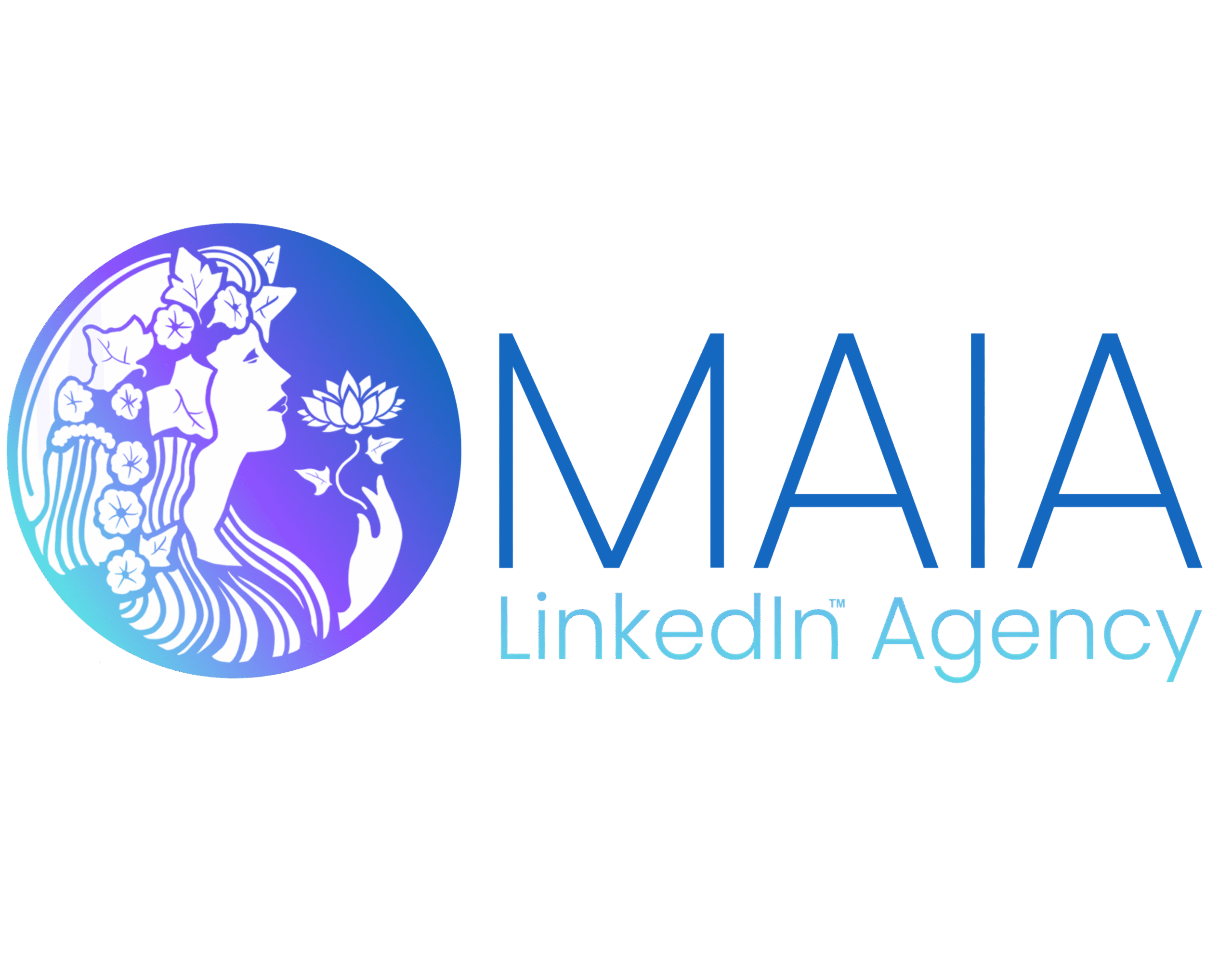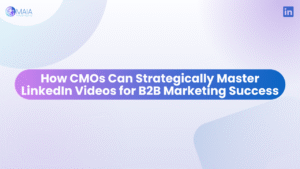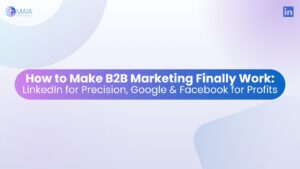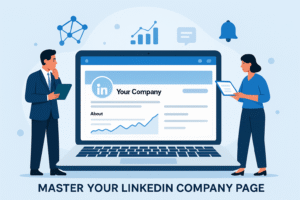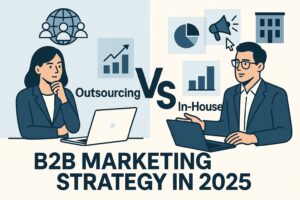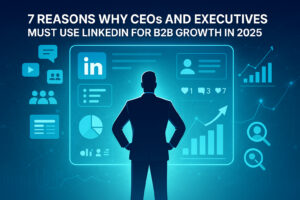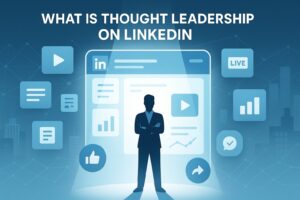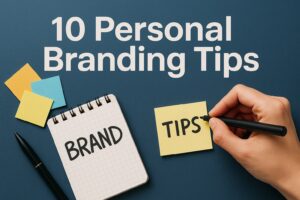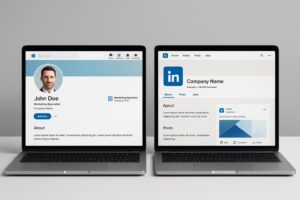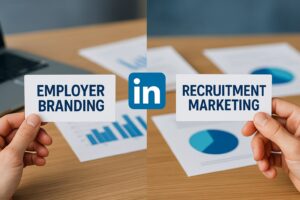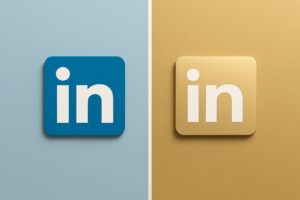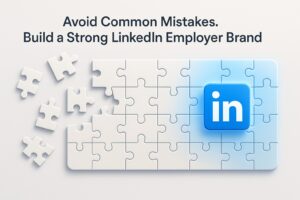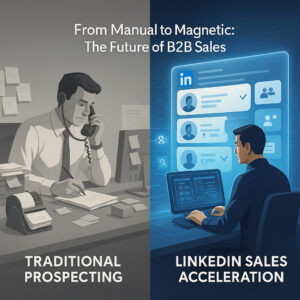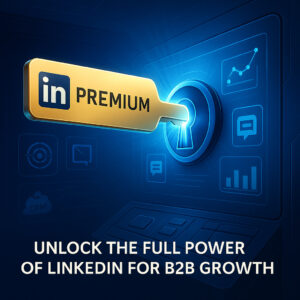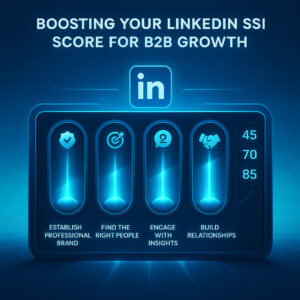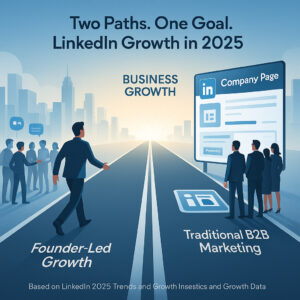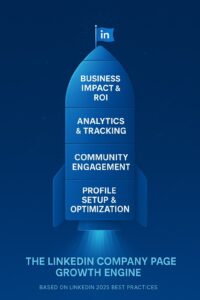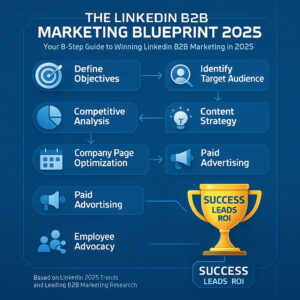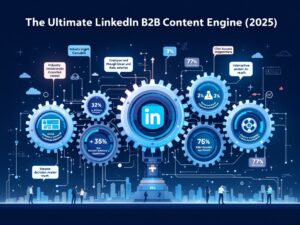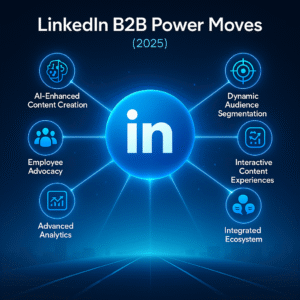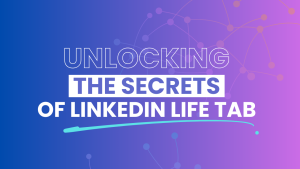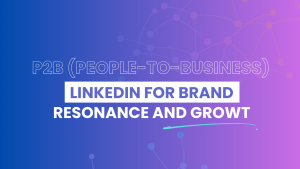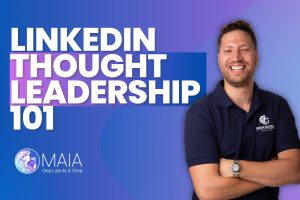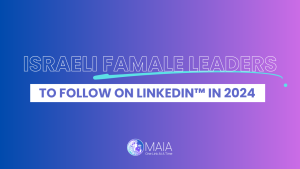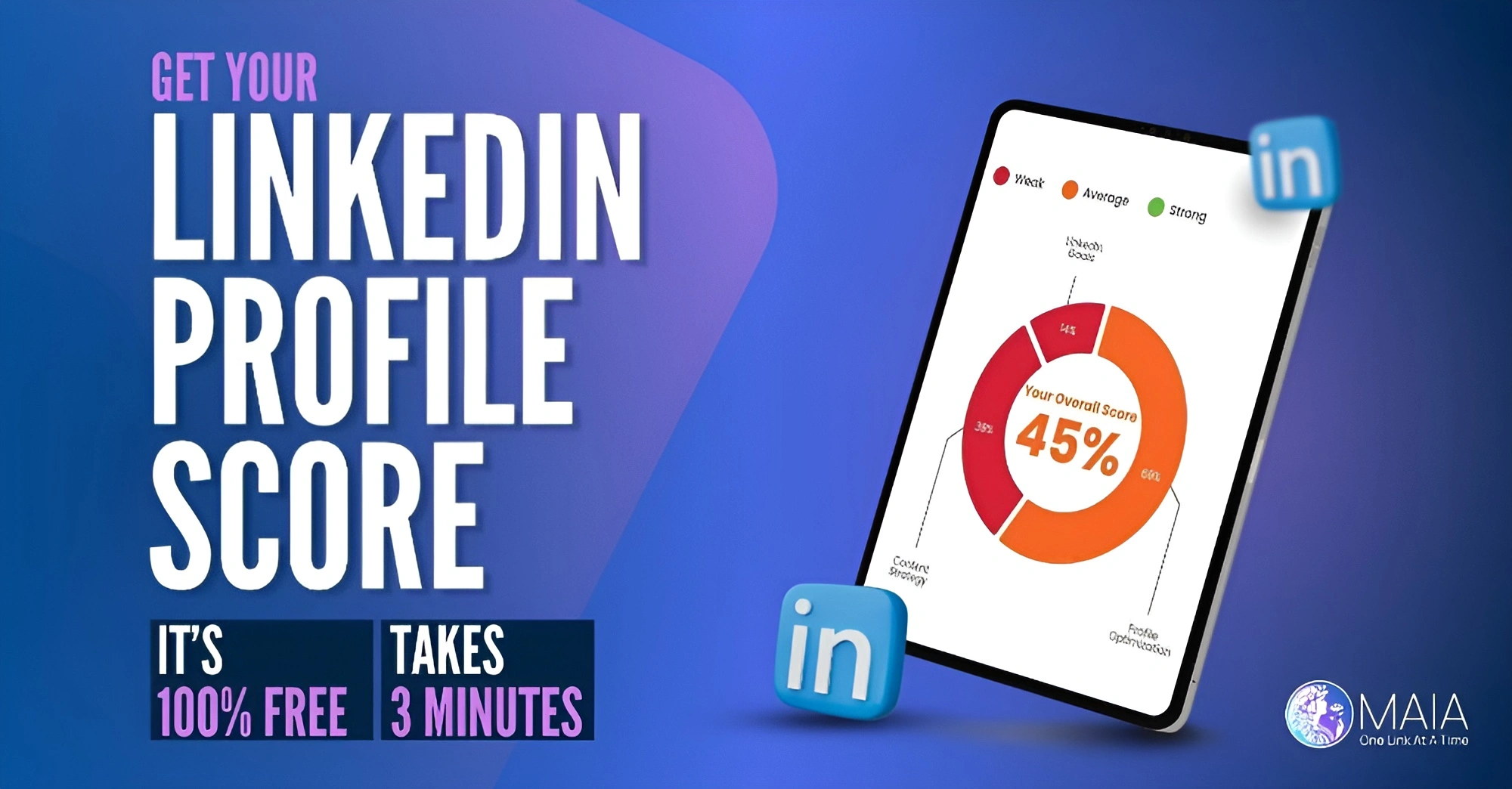Founder-Led Growth vs Traditional B2B Marketing: Ultimate LinkedIn Playbook (2025 Edition)
The B2B marketing landscape has undergone a significant transformation over the past few years, with LinkedIn cementing its position as the premier platform for business development. At the forefront of this evolution is the rise of founder-led growth strategies, challenging traditional B2B marketing approaches in both methodology and results.
As we navigate through 2025, the distinction between these two approaches has become increasingly relevant for businesses seeking to maximize their LinkedIn presence and drive meaningful growth.
What is Founder-Led Growth?
Founder-led growth is a strategy where company founders take an active, visible role in the company’s marketing and sales efforts. This approach leverages the founder’s personal brand, expertise, and authentic voice to build connections, establish credibility, and drive business growth.
According to LinkedIn’s 2025 B2B Marketing Report, content shared by company leaders receives an average of 3x more engagement than content shared by company pages alone. This highlights the power of personal brand in the B2B space.
Key Characteristics of Founder-Led Growth
-
Authenticity: Communication comes directly from the founder, providing a human face to the business
-
Personal storytelling: Sharing experiences, challenges, and insights from the founder’s perspective
-
Direct engagement: Founders actively participate in conversations with prospects and customers
-
Thought leadership: Positioning the founder as an industry expert through valuable content
-
Network leverage: Utilizing the founder’s personal connections for business opportunities
Traditional B2B Marketing on LinkedIn
Traditional B2B marketing on LinkedIn typically follows more established corporate communication patterns. It focuses on company pages, branded content, and more formal marketing strategies.
Key Characteristics of Traditional B2B Marketing
-
Brand-centric messaging: Communication focuses on the company rather than individuals
-
Structured campaigns: Carefully planned marketing initiatives with defined timelines
-
Corporate voice: Content typically employs a more formal tone and style
-
Departmental approach: Marketing is handled by dedicated teams rather than leadership
-
Performance metrics: Heavy focus on quantifiable KPIs and conversion data
The 2025 LinkedIn Landscape: Why This Matters Now
LinkedIn’s algorithm updates in late 2024 have significantly impacted how content is distributed. The platform now prioritizes authentic engagement and relationship-building over purely promotional content.
Research from Harvard Business Review’s 2024 Digital Leadership Study found that 78% of B2B buyers research company leadership before making purchasing decisions, with 64% stating they’re more likely to consider companies where leadership is actively visible online.
This reflects a broader trend in B2B purchasing behavior where trust and personal connection increasingly influence buying decisions.
The Founder-Led Growth LinkedIn Playbook for 2025
If you’re considering adopting a founder-led growth strategy on LinkedIn, here’s a playbook based on the latest platform insights:
1. Optimize Your Personal Profile
Your personal profile is now as important as your company page.
Profiles with complete information receive up to 40% more weekly views.
Checklist:
-
Use a professional, approachable headshot
-
Create a compelling headline highlighting your expertise and company role
-
Write a story-driven About section connecting your journey to your mission
-
Highlight key achievements and expertise in the Featured section
-
Turn Creator Mode on and select your niche topics
Profiles blending expertise with authentic personal values perform best in 2025.
2. Develop a Consistent Content Strategy
LinkedIn’s 2025 algorithm rewards consistent, valuable posting.
Content mix recommendations:
-
40% Thought leadership: Industry insights, predictions
-
25% Personal stories: Founder experiences and lessons
-
20% Educational content: How-to’s, practical advice
-
10% Company highlights: Wins, milestones, new features
-
5% Personal interests: Non-business hobbies and values
Founders posting 3–4 times a week achieve optimal engagement.
3. Leverage Visual and Interactive Content
Top-performing content formats in 2025:
-
LinkedIn Articles: 2500–3000 words for deep industry dives
-
Carousel posts: 15–20 slides perform 72% better than text-only
-
Short-form videos: 1–3 minutes, casual “talking head” style
-
LinkedIn Live: Real-time sessions showcasing expertise
-
Newsletters: Weekly or bi-weekly to maintain audience touchpoints
Founders using 3+ content formats see 2.7x more profile visits.
4. Build Authentic Engagement Habits
LinkedIn’s algorithm now favors meaningful interactions.
Daily engagement habits:
-
Dedicate 30 minutes to comment thoughtfully
-
Engage with 10–15 relevant posts daily
-
Send 5–7 personalized connection requests
-
Comment on trending topics in your niche
-
Publicly recognize others’ achievements
Responding to 80%+ of comments leads to 3.5x higher reach.
Integrating Traditional B2B Marketing with Founder-Led Growth
The best strategies combine both.
How to integrate:
-
Synchronize content: Align company page posts with founder perspectives
-
Leverage team amplification: Employees share and add their takes
-
Balance metrics: Measure both KPIs and relationship strength
Companies tracking both performance and relationships see 57% better customer acquisition results.
Common Pitfalls to Avoid
Founder-Led Growth Pitfalls:
-
Inconsistency
-
Inauthenticity
-
Time mismanagement
-
Overpromotion
-
Difficulty scaling
Traditional B2B Pitfalls:
-
Brand anonymity
-
Low engagement
-
Slow adaptation
-
Overreliance on ads
-
Customer disconnection
Case Study: Successful Founder-Led Growth
Gal Aga, founder and CEO of Aligned, turned LinkedIn into a primary growth engine by fully embracing a founder-led strategy starting in 2023.
Previous strategy (Traditional B2B):
-
Company page-driven posts about features and product updates
-
Limited personal presence from leadership
-
Heavy investment in ads and outbound efforts
-
Minimal direct engagement by leadership with prospects or customers
Results: 1.8% engagement rate, 18 inbound leads per month, high dependence on paid channels
New strategy (Founder-Led Growth):
-
Gal posting 3–5 times weekly, sharing personal insights on B2B sales, startup challenges, and buyer enablement
-
Regularly engaging with prospects and customers in comment sections
-
Hosting webinars, LinkedIn Lives, and open AMA (Ask Me Anything) sessions
-
Highlighting customer success stories and transparent behind-the-scenes updates
Results after 6 months:
-
65% of Aligned’s leads sourced directly from LinkedIn
-
Individual posts generating 100–150 inbound leads each
-
LinkedIn profile reach skyrocketed to 1.5 million+ views per week
-
Aligned’s ARR tripled during 2024 with 142% Net Revenue Retention (NRR)
-
Company page impressions exceeded 4.4 million in October alone
Key takeaway:
Gal’s founder-led visibility made Aligned not just a product, but a movement around better B2B selling. His authenticity, consistency, and audience-first mindset transformed both inbound lead generation and brand loyalty — proving that when founders show up with value, results follow.
Final Verdict: Which Approach is Right for You?
Founder-Led Growth is ideal if:
-
You have a visible, willing founder
-
You need to differentiate in a competitive market
-
Trust and personal relationships drive your sales
-
You want lower customer acquisition costs through organic channels
Traditional B2B Marketing works if:
-
Leaders are time-constrained or private
-
Products are highly technical or regulated
-
Dedicated marketing teams manage content
-
Multi-touchpoint buying journeys dominate your sales process
For most businesses, an integrated strategy wins — combining personal leadership with traditional marketing rigor.
Ready to develop a LinkedIn strategy that blends founder-led growth and traditional B2B marketing?
Our team of LinkedIn specialists can help you build a customized roadmap aligned with your business goals, founder strengths, and industry context.
FAQ: Founder-Led Growth vs Traditional B2B Marketing on LinkedIn
How much time should founders dedicate to LinkedIn each week?
Successful founder-led growth typically requires 5-7 hours weekly, broken into daily blocks: 2-3 hours for content creation, 1-2 hours for engagement, and 1-2 hours for relationship building. Many founders find morning or evening 30-minute sessions most sustainable.
Can founder-led growth work for introverted leaders?
Absolutely. Many successful founder-led strategies are implemented by introverted leaders who leverage written content, prepared videos, and scheduled engagement sessions. The key is authenticity, not necessarily extroversion. Some of the most compelling founder content comes from thoughtful, introspective leaders.
How do you measure ROI for founder-led growth initiatives?
Effective measurement combines quantitative metrics (profile visits, connection growth, content engagement, lead attribution) with qualitative indicators (conversation quality, direct messages, meeting requests, referral mentions). Most businesses implementing founder-led growth see results within 3-4 months of consistent activity.
What if our company has multiple founders or leaders?
Multiple leaders can create an even more effective ecosystem by highlighting different areas of expertise. The most successful multi-leader approaches involve each person focusing on their unique strengths and knowledge areas while maintaining a cohesive brand message. This creates multiple entry points for different audience segments.
Can traditional B2B marketing still be effective on LinkedIn in 2025?
Traditional B2B marketing remains effective when it embraces authenticity and value-driven content. The companies seeing the best results have evolved their traditional approaches to include more human elements—employee spotlights, behind-the-scenes content, and authentic customer stories—while maintaining the systematic approach that makes traditional marketing scalable.
